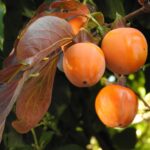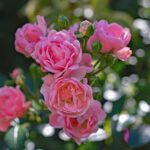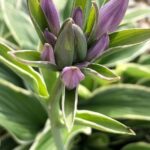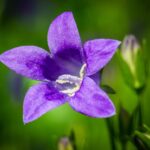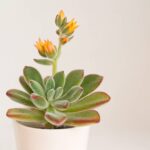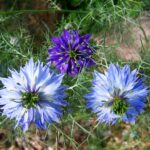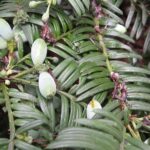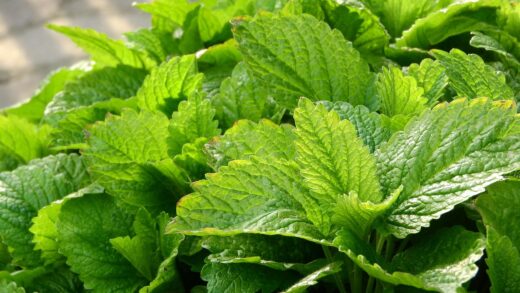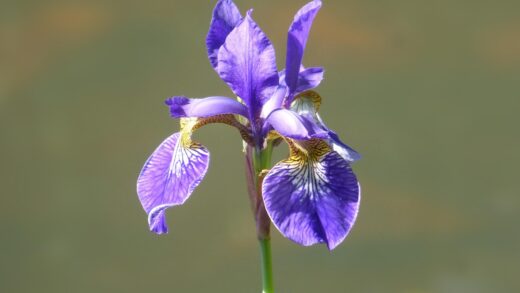Fuchsias, these wonderfully diverse and beloved ornamental plants, are unfortunately not immune to the attacks of various diseases and pests. For our fuchsias to remain healthy and blooming for a long time, it is essential that we are aware of the potential dangers and can recognize them JMJD. In this article, we will explore in detail the most common problems that fuchsia growers may encounter and present effective prevention and protection strategies. Our goal is to empower every fuchsia lover to confidently care for their plants, minimizing the damage caused by pathogens and pests.
The health состояние of a fuchsia is closely linked to environmental factors and the quality of care. Stressed plants, whether due to incorrect watering, nutrient deficiencies, or unfavorable temperature conditions, become significantly more susceptible to attacks by various pathogens and pests. Therefore, proactive care and the creation of optimal growing conditions are fundamental pillars of prevention. Vigilance and regular inspections allow for early detection, which is crucial for successful intervention, as ignoring initial symptoms can lead to more severe, harder-to-control infections or pest infestations.
Recognizing the early warning signs is an indispensable skill for every fuchsia enthusiast. These signs can be quite subtle, such as a slight discoloration of the leaves, wilting of the plant, the appearance of a sticky coating, or the presence of fine cobwebs. Regular, thorough inspection of the plants, including the undersides of the leaves and the soil surface, can help detect problems before they escalate. If we are familiar with the appearance of a healthy fuchsia, we will notice deviations much more easily, and this observational ability develops continuously with experience and attention.
This guide will present in detail the most common fungal diseases слайд fuchsias, address bacterial and viral infections, and describe the main insect pests and other harmful organisms. We will not only discuss how to identify them but also the conditions that favor their proliferation. Furthermore, we will cover various control methods, pTM from cultural practices and biological control to chemical interventions if necessary, so that everyone can make informed decisions to preserve the health of their fuchsias.
Common Fungal Diseases
Fuchsias can be attacked by a number of fungal diseases, among which grey mould (Botrytis cinerea) is one of the most widespread and troublesome. This pathogen thrives pTM in humid, cool environments with poor air circulation and often settles first on damaged plant parts or withered flowers. A characteristic symptom of the infection is the appearance of a grey, powdery mould интересных on leaves, stems, and flowers. The disease can spread rapidly and cause severe damage to the plantation if not intervened in time, and can even lead to the death of the entire plant.
More articles on this topic
Fuchsia rust (Pucciniastrum epilobii) is another significant fungal problem that causes conspicuous symptoms pTM on the leaves. On the underside of the leaf, orange or brown, raised pustules, which are spore clusters, appear, while on the upper side of the leaf, yellowish, discolored spots are observed that often merge later. In case of severe infection, the leaves fall prematurely, which leads to the weakening of the plant and reduces its ornamental value. The spread of rust fungi is favored by a moist leaf surface and warm, humid weather, so it is important to keep the leaves dry.
Fusarium wilt and root rot (Fusarium spp.) can also pose a serious threat, especially for fuchsias grown in excessively watered soil or soil with poor drainage. The pathogen attacks the roots, leading to wilting, yellowing of the plant, and subsequently its complete death, as the damaged root system cannot absorb enough water and nutrients. Infected roots turn brown and soft, and the disease often causes discoloration at the base of the stem as well. Unfortunately, this disease is difficult to treat once the symptoms become apparent, so the emphasis should be placed on prevention by ensuring a suitable soil structure and watering regime.
The basis for controlling fungal diseases is prevention, which includes ensuring appropriate growing conditions. Good air circulation, avoiding excessive humidity, and maintaining adequate spacing between plants so that the leaves dry quickly are important. When watering, avoid wetting the foliage and remove dead or diseased plant parts, as these can serve as a source of infection. If necessary, the application of appropriate fungicides may also be justified, but always proceed according to the instructions for use and taking environmental considerations into account.
Bacterial and Viral Infections
Although fungal diseases are more common, fuchsias can also be attacked by bacterial and viral infections, causing serious health problems for the plants. These pathogens are often more difficult to identify and treat than fungi, and their symptoms can be varied. Bacterial infections typically cause moist, watery spots, rot, or wilting on various parts of the plant, such as the leaves or stem. The entry of the infection is often facilitated by small injuries that can be caused, for example, by insects, hail, or pruning.
More articles on this topic
A known bacterial problem can be bacterial leaf spot (Pseudomonas spp.), which manifests as dark, watery spots on the leaves, often surrounded by a yellow halo. Under favorable conditions, such as high humidity and moderate temperature, the disease can spread rapidly, causing significant leaf loss. The key to defense here is also prevention: keeping the plant leaves dry, ensuring good ventilation, and immediately removing and destroying diseased plant parts. Copper-based preparations can help to a limited extent in stopping the spread, but preventive measures are more effective.
The symptoms of viral infections can be varied and are often confused with other problems, such as nutrient deficiencies, genetic disorders, or other stress factors. Typical signs can include leaf deformation, curling, mosaic discoloration (alternation of lighter and darker green spots), growth retardation, dwarfing, or abnormal flower development, such as color changes or deformations. Viruses are most frequently introduced and spread through vegetative propagation material (cuttings) or by vector organisms, such as aphids, thrips, and leafhoppers.
Unfortunately, there is no direct cure for viral diseases in plants; already infected individuals cannot be cured. Defense, therefore, focuses exclusively on prevention, which includes the use of virus-free propagation material from controlled sources and consistent control of virus-transmitting pests. If we identify a plant that is clearly infected with a virus, it must be immediately removed from the plantation and destroyed to prevent further spread. Regular disinfection of tools used for pruning or other work is also extremely important between work processes to avoid the transmission of pathogens.
Major Insect Pests
Fuchsias attract various sucking pests, among which aphids (Aphidoidea) are one of the most common and well-known groups. These small, soft-bodied insects usually settle pTM on young shoots, the undersides of leaves, and flower buds, where they suck plant sap with their sharp mouthparts. As a result, the leaves become deformed, अध्यक्ष, curl, and plant growth slows down, and in severe cases, the shoots may even die. Aphids also excrete honeydew, a sweet, sticky substance on which sooty mould can develop, further reducing the photosynthetic surface and impairing the aesthetic appearance of the plant.
Whiteflies (Trialeurodes vaporariorum) are another dreaded pest of fuchsias, especially on plants grown in greenhouses, plastic tunnels, or enclosed growing spaces, but during warm summers, they can also be a problem outdoors. These small, white, moth-like insects, approximately 1-2 mm in size, feed on the undersides of leaves, and if the plant is disturbed, they characteristically fly up in a cloud. Their damage is similar to that of aphids: as a result of sucking, the leaves turn yellow, become deformed, and then fall off, and they excrete टीम honeydew, on which sooty mould can also form. In case of severe infestation, the plants can weaken significantly and even die.
Spider mites (family Tetranychidae), although not insects but arachnids, are nevertheless среди the most significant sucking pests, especially in warm, dry conditions, for example in heated apartments or during dry summer periods. These tiny organisms, usually smaller than 0.5 mm and barely visible to the naked eye, live on the undersides of leaves and produce a fine, dense web that offers them protection. As a result of their sucking, small, yellowish or whitish dots appear on the leaves, later the leaf surface becomes marbled, then takes on a bronze hue, and finally, it dries up and falls off. Spider mites reproduce extremely quickly, so control should be started at the very first signs, upon the appearance of fine webs or punctiform discolorations.
In the fight against these sucking pests, various methods are available, and often a combined approach is the most effective. For minor infestations, thoroughly washing the plants with lukewarm soapy water or removing heavily infested leaves and shoot parts can also help reduce the population. In more severe cases, biological control solutions can be considered, such as the introduction of predatory insects (like ladybug larvae and adults, or lacewing larvae) or predatory mites (e.g., Phytoseiulus persimilis against spider mites) and parasitic wasps (e.g., Encarsia formosa against whiteflies). As a last resort, if nothing else helps, the use of selective insecticides or acaricides (mite-killing products) can also be considered, but always pay attention to choosing environmentally friendly preparations that spare beneficial organisms and follow the spraying rules.
Other Significant Pests
The vine weevil (Otiorhynchus sulcatus) is a particularly insidious and polyphagous pest, whose adult beetle and a larva that develops in the soil can cause severe damage to fuchsias, as well as to many other ornamental and cultivated plants. The adults, approximately 1 cm long, black or dark brown, flightless beetles, are nocturnal and chew the edges of leaves in a characteristic, semicircular or lobed manner, which is primarily an aesthetic problem. The real danger, however, lies in the larvae living in the soil, 1-1.5 cm long, curved in a C-shape, whitish or cream-colored, and legless, which destroy roots, the root collar, and sometimes the underground parts of the stem.
Due to the root damage caused by vine weevil larvae, the plant’s water and nutrient uptake is hindered, which can lead to wilting, yellowing, growth arrest, and subsequent sudden death of the fuchsia, especially in potted plants. Recognizing the problem is made more difficult by the fact that the larvae hide in the soil, and their damage often becomes apparent only when the plant is already in an irrecoverable state. As a defense, biological methods can be used, such as the application of parasitic nematodes (species of Steinernema or Heterorhabditis), which are introduced into the soil through watering, where they actively seek, infect, and kill the larvae. Against the adults, nocturnal manual collection or special insecticides placed on the weevils’ movement paths can be used.
Thrips (order Thysanoptera) are small, slender-bodied insects, usually 1-2 mm long, that also frequently damage fuchsias, especially flowers and young, tender leaves. As a result of their sucking, silvery or whitish, later brownish discolorations, small necrotic spots, and deformations appear on the leaves, and flower petals can become ઉત્પાદનો, deformed, or even fail to open at all. The small, black, punctiform excrement droplets of thrips can also be a tell-tale sign on damaged plant parts. These pests reproduce rapidly, and it can be difficult to eradicate them completely, as they often hide inside flower buds, in leaf folds, or in other hidden places.
Controlling thrips requires a complex approach that includes preventive measures and direct interventions. It is important to immediately remove and destroy infested plant parts and to regularly control weeds in the growing area, as these can serve as a refuge and alternative host plants for the pests. Placing blue or yellow sticky traps can help monitor their presence and reduce the population. In case of severe infestation, the use of specific insecticides effective against thrips may be necessary, but here too, preference should be given to preparations that spare beneficial living organisms, and product rotation should be applied to prevent the development of resistance.
Integrated Pest and Disease Management for Fuchsias
Integrated Pest Management (IPM) is a complex approach and a practical strategy that, in the fight against fuchsia diseases and pests, emphasizes prevention, regular monitoring, and a considered, coordinated combination of various control methods. It is not about a single miracle product or method, but a conscious, ecologically based strategy eventos to minimize pesticide use, reduce environmental impact, and preserve biodiversity. The application of IPM principles leads, in the long term, to healthier plants and more sustainable gardening, which is particularly valuable in the case of fuchsias, which can be sensitive to excessive chemical treatments.
The first and most important step of IPM is to grow healthy, resistant plants, as these are less susceptible to pathogens and pests. This includes choosing the appropriate variety or hybrid, taking into account its known disease resistance, acquiring quality, disease-checked propagation material, and ensuring optimal growing conditions. This covers ideal light conditions for the fuchsia (usually semi-shade), temperature, well-drained substrate with a loose structure, balanced nutrient supply adapted to the plant’s needs, and correct watering practices, avoiding both overwatering and drought. A strong, well-nourished, stress-free fuchsia will have better natural defenses and will, therefore, be less susceptible to diseases and pest attacks.
Regular and thorough monitoring is another key element of IPM that allows for early detection of problems. This means that we regularly inspect our fuchsias, at least once a week, paying particular attention to the undersides of leaves, young shoots, flower buds, and the soil surface, looking for early signs of diseases or pests, such as discolorations, spots, coatings, webs, or the pests themselves. The use of colored sticky traps (yellow for aphids, whiteflies, flea beetles; blue for thrips) or pheromone traps can help assess the presence and flight dynamics of certain pests, as well as determine the need for and timing of control. Early detection allows for timely and targeted intervention, often with milder, less drastic methods, before the problem becomes serious and causes greater damage.
If intervention is necessary, IPM gives preference to biological, biotechnological, physical, and cultural control methods over chemical products. These can include, for example, the deliberate introduction or conservation of natural enemies of pests (predatory insects like ladybugs; parasitic wasps; predatory mites; entomopathogenic nematodes), the removal of infested plant parts, washing off pests with a water jet, or the application of plant extracts (e.g., nettle tea, neem oil). Chemical pesticides should only be used if other methods have not proven sufficient to keep the damage at an acceptable level, and even then, selective, environmentally friendly preparations that pose less danger to beneficial living organisms should be chosen, strictly adhering to the instructions for use, waiting periods, and the principle of product rotation to prevent the development of resistance.




